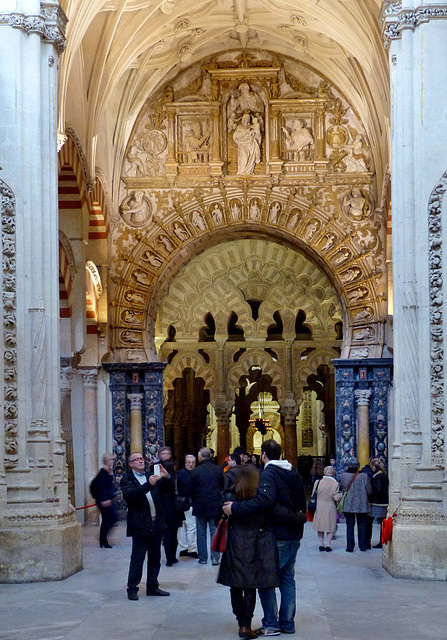Córdoba - Mezquita-Catedral
Córdoba - Mezquita-Catedral
Córdoba - Mezquita-Catedral
Córdoba - Mezquita-Catedral
Córdoba - Mezquita-Catedral
Córdoba - Mezquita-Catedral
Córdoba - Mezquita-Catedral
Córdoba - Mezquita-Catedral
Córdoba - Convento de Santa Clara
Córdoba - Convento de Santa Clara
Córdoba - Teatro Gongora
Córdoba - Plaza de las Tendillas
Córdoba - Minaret of San Juan
Antequera - Alcazaba
El Torcal de Antequera
El Torcal de Antequera
Torremolinos
Frigiliana
Frigiliana
Frigiliana
Frigiliana
Sierra Nevada
Granada
Córdoba - Mezquita-Catedral
Córdoba - Mezquita-Catedral
Córdoba - Mezquita-Catedral
Córdoba - Mezquita-Catedral
Córdoba - Mezquita-Catedral
Córdoba - Mezquita-Catedral
Córdoba - Mezquita-Catedral
Córdoba - Mezquita-Catedral
Córdoba - Mezquita-Catedral
Córdoba - Mezquita-Catedral
Córdoba - Mezquita-Catedral
Córdoba - Mezquita-Catedral
Córdoba - Mezquita-Catedral
Córdoba - Mezquita-Catedral
Córdoba - Mezquita-Catedral
Córdoba - Puente Romano
Córdoba - Guadalquivir
Parador de Antequera
Parador de Antequera
Antequera - Real Colegiata de San Sebastián
Antequera - Santa María de Jesús
Antequera - Real Colegiata de Santa Maria
Location
Lat, Lng:
You can copy the above to your favourite mapping app.
Address: unknown
You can copy the above to your favourite mapping app.
Address: unknown
See also...
Keywords
Authorizations, license
-
Visible by: Everyone -
All rights reserved
-
137 visits
Córdoba - Mezquita-Catedral


Córdoba shares its history with so many cities in Southern Spain. It was Carthaginian and Roman (from 260BC on), later it belonged to the Byzantine Empire for two decade, got looted by the Vandals, before Visigoths conquered it in 572. In 711 it was taken by the by the Umayyad army and became a provincial capital.
At that time a Christian church erected by the Visigoths was on the site, it was divided and shared by Muslims and Christians. The sharing agreement lasted until 784, when the Christian half was purchased by the Emir Abd al-Rahman I, who then demolished the church and started to build the grand mosque of Córdoba on its ground. This narrative goes back to the tenth-century historian al-Razi.
The work of building the Mezquita employed thousands of artisans and labourers. After the first completion it underwent numerous subsequent changes: Abd al-Rahman II ordered a new minaret, Al-Hakam II enlarged the building and enriched the Mihrab. The Mezquita reached its current dimensions in 987 with the completion of the outer naves and courtyard.
It covers an area of more than 23.000 m².
The Mezquita still is one of the largest sacred buildings on earth. In the 10th century it was in the center of Cordoba, that with a population of upto 500.000, at that time it was one of the largest cities in the known world.
After in 1236 Córdoba was captured from the Moors, the Christians initially left the architecture Mezquita undisturbed.
The just consecrated it, dedicated it to the Virgin Mary, and used it as a place of Christian worship. Later small chapels were inserted and the the minaret was converted into a the bell tower of the cathedral.
The most significant alteration was the building of a Renaissance cathedral in a cruciform layout right ine center of the former mosque. The insertion was constructed by permission of Charles V, King of Castile and Aragon.
The legend tells, that upon seeing it completed, he remarked, "You have built here what you or anyone might have built anywhere else, but you have destroyed what was unique in the world."
Here in the foreground is an arch, belonging the the "new" cathedral, while in the backdrop is a part of the "old" mosque.
At that time a Christian church erected by the Visigoths was on the site, it was divided and shared by Muslims and Christians. The sharing agreement lasted until 784, when the Christian half was purchased by the Emir Abd al-Rahman I, who then demolished the church and started to build the grand mosque of Córdoba on its ground. This narrative goes back to the tenth-century historian al-Razi.
The work of building the Mezquita employed thousands of artisans and labourers. After the first completion it underwent numerous subsequent changes: Abd al-Rahman II ordered a new minaret, Al-Hakam II enlarged the building and enriched the Mihrab. The Mezquita reached its current dimensions in 987 with the completion of the outer naves and courtyard.
It covers an area of more than 23.000 m².
The Mezquita still is one of the largest sacred buildings on earth. In the 10th century it was in the center of Cordoba, that with a population of upto 500.000, at that time it was one of the largest cities in the known world.
After in 1236 Córdoba was captured from the Moors, the Christians initially left the architecture Mezquita undisturbed.
The just consecrated it, dedicated it to the Virgin Mary, and used it as a place of Christian worship. Later small chapels were inserted and the the minaret was converted into a the bell tower of the cathedral.
The most significant alteration was the building of a Renaissance cathedral in a cruciform layout right ine center of the former mosque. The insertion was constructed by permission of Charles V, King of Castile and Aragon.
The legend tells, that upon seeing it completed, he remarked, "You have built here what you or anyone might have built anywhere else, but you have destroyed what was unique in the world."
Here in the foreground is an arch, belonging the the "new" cathedral, while in the backdrop is a part of the "old" mosque.
Nicole Merdrignac has particularly liked this photo
- Keyboard shortcuts:
Jump to top
RSS feed- Latest comments - Subscribe to the comment feeds of this photo
- ipernity © 2007-2025
- Help & Contact
|
Club news
|
About ipernity
|
History |
ipernity Club & Prices |
Guide of good conduct
Donate | Group guidelines | Privacy policy | Terms of use | Statutes | In memoria -
Facebook
Twitter

sincere greetings → Marek-Ewjan
Sign-in to write a comment.